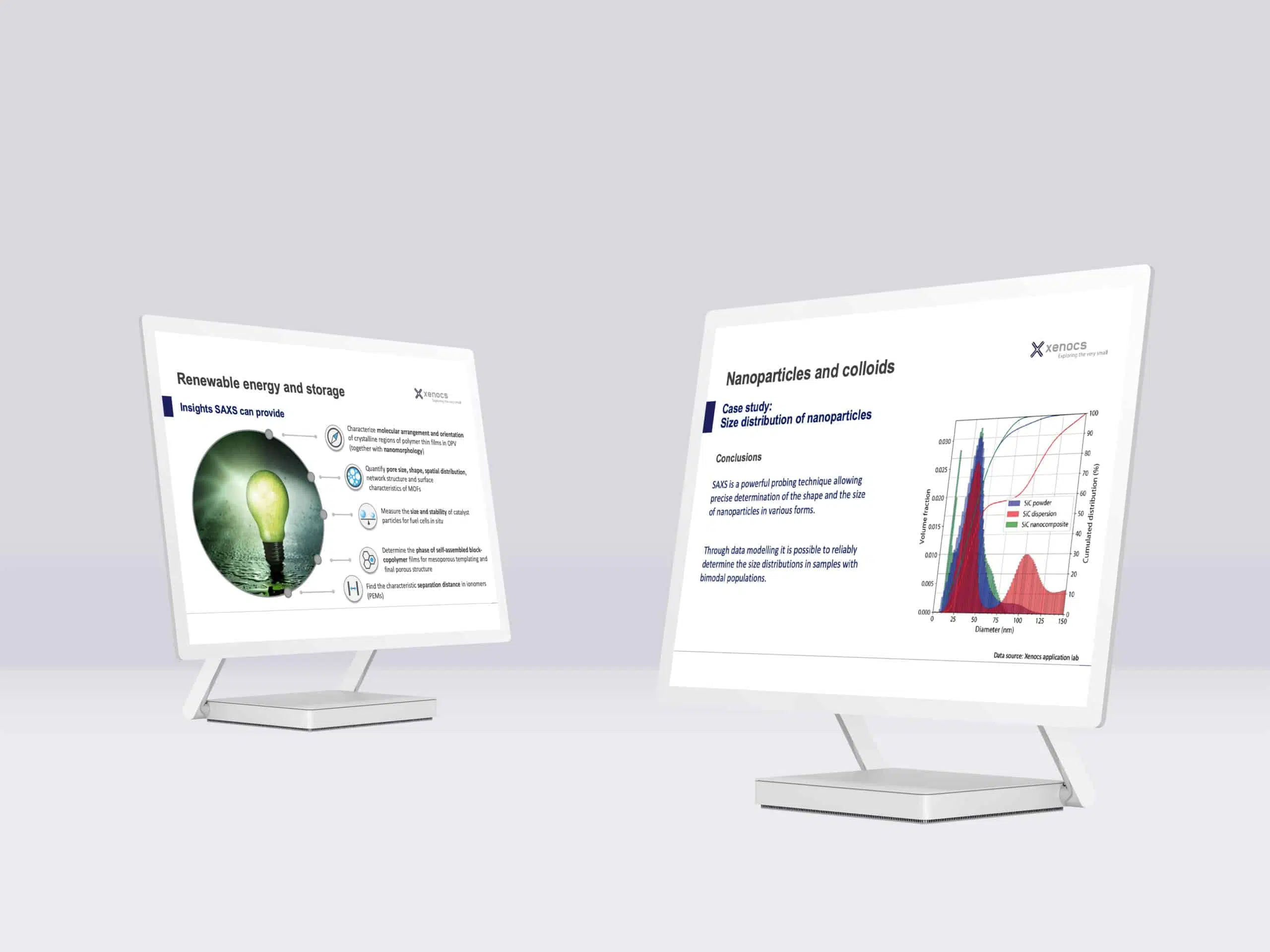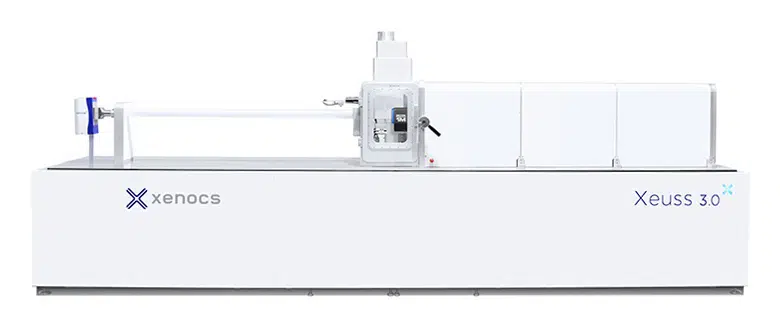Nanoparticle size
and size distribution
Nanoparticle size and size distribution,
What is measured?
The measured quantity is the diameter of globular shaped particles and the related number- or volume-weighted size distribution. The quantitative analysis in terms of volume fraction or mass concentration is possible due to scattering intensities being normalized to absolute units.
Range of diameters accessible with SAXS measurements:
- 1 to 300 nm
- Up to 5 µm with the USAXS extension
- Applicable to multimodal distributions

Figure 1. Size distribution of dilute silver nanoparticles in aqueous suspension obtained from SAXS data acquired on the Nano-inXider. The data analysis was performed with XSACT software.
Samples
Typical samples for this measurement are:
-
Dispersions and suspensions
-
Dry powders
-
Nanostructured solids
-
Gels and pastes
Have a look at the following examples:
Methods & standards
Standards & methods used for particle size & size distribution:
- Size determination by Guinier analysis and model fitting
Ref: ISO 17867:2020 – Particle Size Analysis – Small-angle X-ray scattering - Guinier analysis
Ref: A. Guinier, G. Fournet Small-Angle Scattering of X-rays. John Wiley, New York, 1955 - Expectation Maximization (EM)
Ref: F. Benvenuto, H. Haddar and B. Lantz, SIAM J. Appl. Math., 2016, 76(1), 276-292
XSACT analysis software implements the above methods and standards.

Why use SAXS for nanoparticle size & size distribution measurements ?
Advantages of SAXS for measuring particle size & size distribution:
-
Exceptional resolution power even for smallest nanoparticles and bimodal populations.
-
Reliable statistical properties due to ensemble averaging.
-
Minimal sample preparation is required. You can work with a wide range of concentrations and samples, even on opaque suspensions or dry powders. No dilution step is required.
-
With SAXS, you can do in situ and dynamics studies.





































